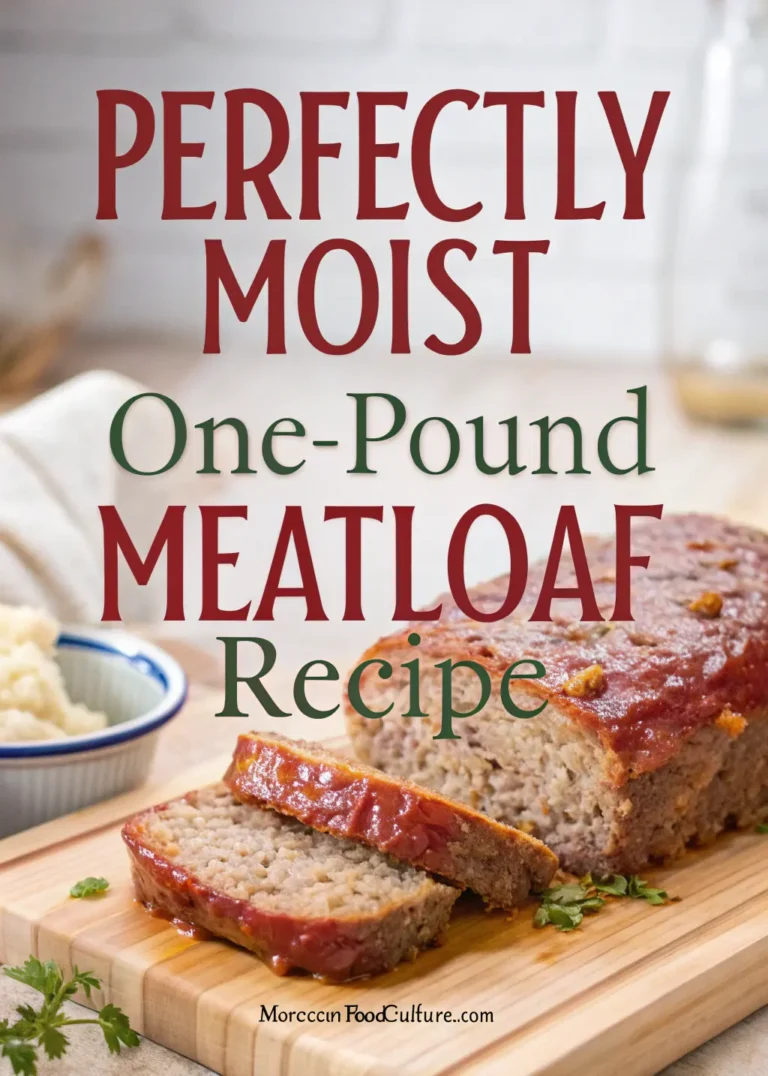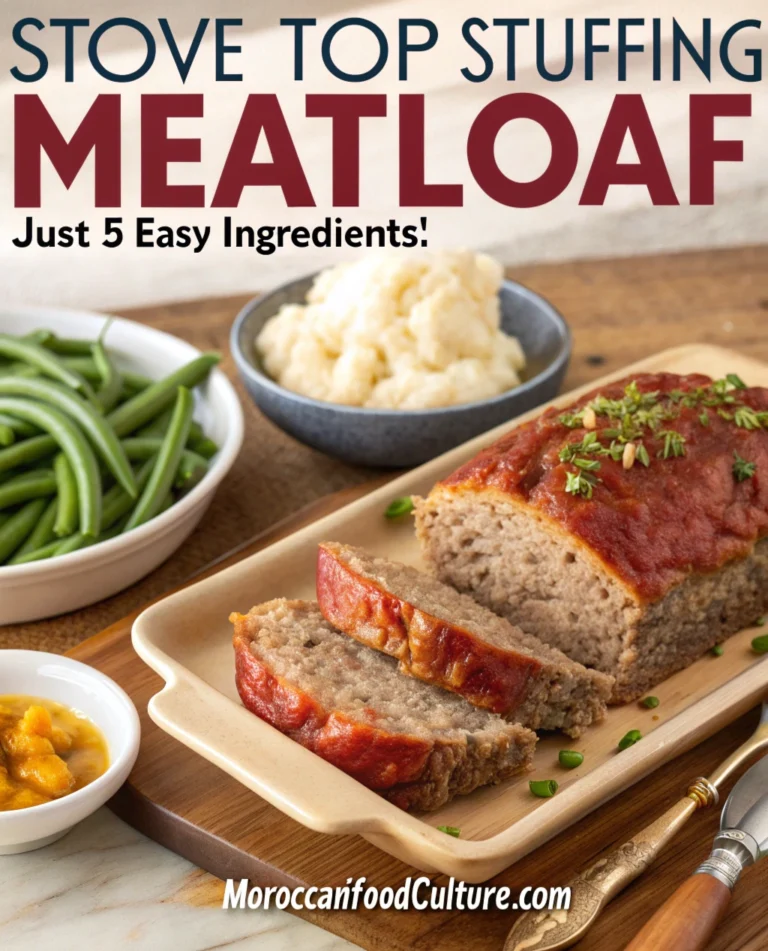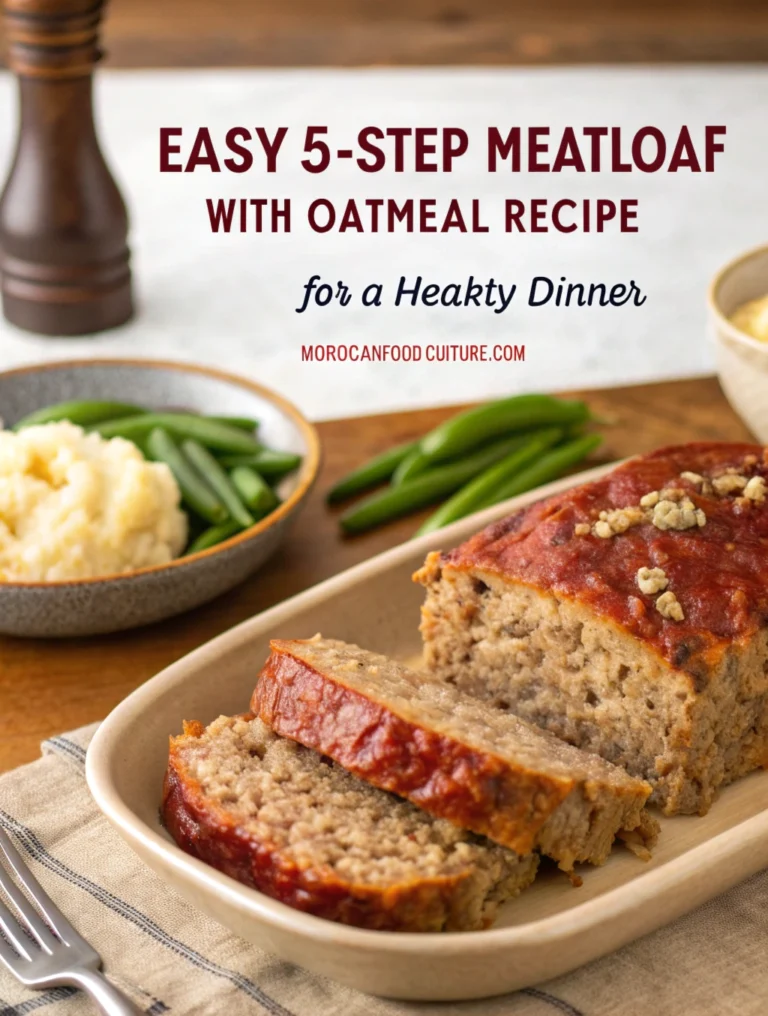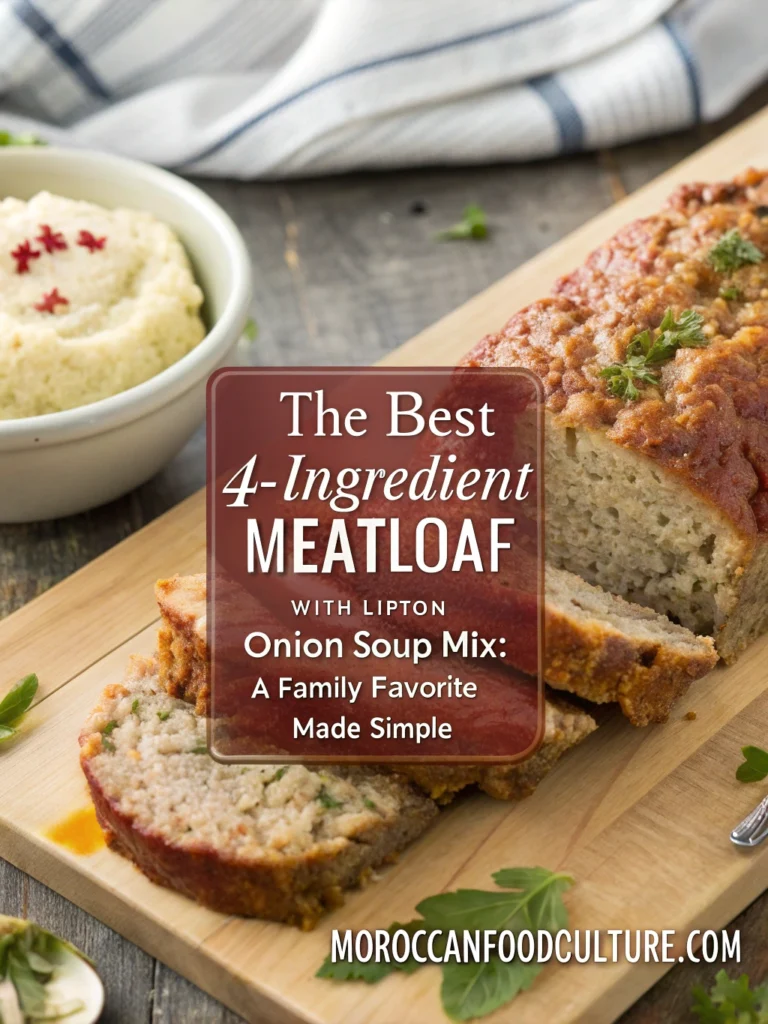Meatloaf Seasoning Made Easy – The Perfect Mix in 3 Simple Steps
Have you ever taken that first bite of meatloaf and felt something fundamental was missing? That elusive harmony of flavors that transforms an ordinary meatloaf into a memorable family feast? I still recall my grandmother’s kitchen, filled with intoxicating aromas as she crafted her legendary meatloaf – a recipe that required years to perfect but vanished from our plates within minutes.
Today, I’m sharing what took me countless attempts to discover: creating exceptional meatloaf seasoning isn’t complicated. With just three straightforward steps, you’ll elevate your humble meatloaf from forgettable to extraordinary, preparing meals that have everyone rushing to claim their place at the dinner table.
Table of Contents
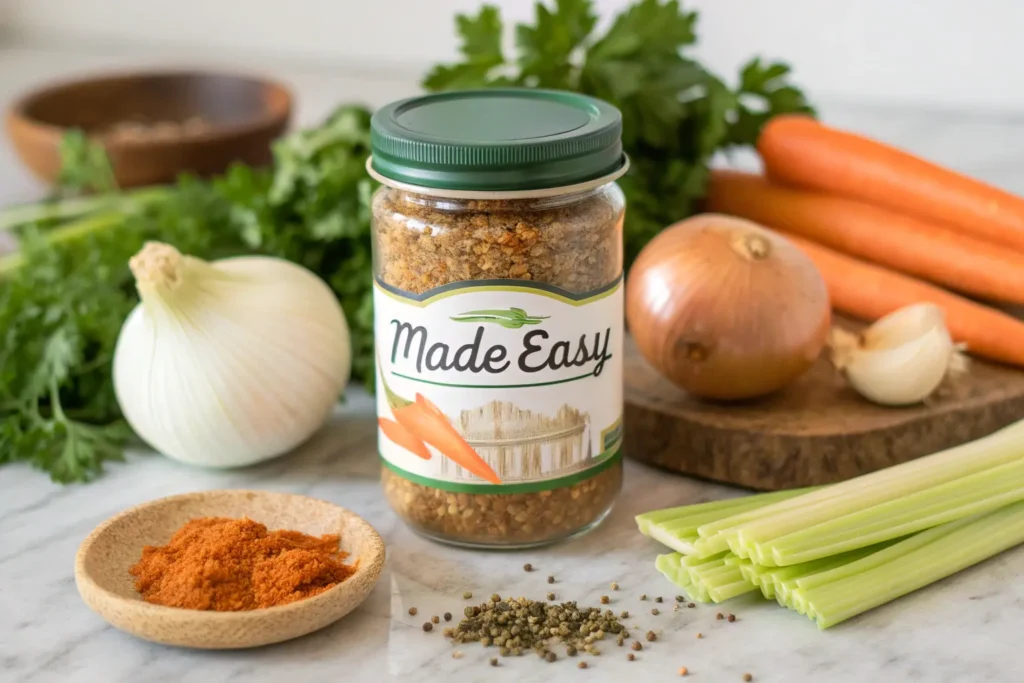
Why Proper Meatloaf Seasoning Makes All the Difference
Every remarkable meatloaf begins with thoughtful seasoning. Before exploring our three-step process, let’s understand why seasoning matters so profoundly:
- Transforms plain ground meat into a flavorful centerpiece worthy of admiration
- Creates depth through carefully layered complementary flavors
- Ensures consistency throughout every bite of your masterpiece
- Enhances natural meat flavors without overwhelming them
- Addresses the universal complaint of “uninspired” or “bland” meatloaf
Common Meatloaf Seasoning Mistakes to Avoid
Many home cooks struggle with meatloaf not because of poor technique, but because of avoidable seasoning missteps:
- Under-seasoning (the foremost meatloaf downfall)
- Relying exclusively on salt while neglecting other flavor dimensions
- Using stale or expired spices that have lost their potency
- Introducing spices too late during mixing, preventing proper flavor distribution
- Failing to balance savory, sweet, and aromatic elements for complexity
The Essential Meatloaf Seasoning Components
Before revealing our perfect three-step approach, let’s explore the key flavor categories that create a well-rounded meatloaf seasoning profile:
Base Savory Elements
These provide the foundation of your meatloaf seasoning blend:
| Ingredient | Purpose | Recommended Amount (per pound) |
|---|---|---|
| Salt | Enhances overall flavor | 1/2 teaspoon |
| Black Pepper | Adds gentle heat | 1/4 teaspoon |
| Garlic Powder | Provides savory depth | 1/2 teaspoon |
| Onion Powder | Adds sweet savoriness | 1/2 teaspoon |
The foundation begins with these fundamental ingredients that awaken your meat mixture. Salt doesn’t merely make food salty – it enhances flavor compounds already present in your meat. Garlic and onion powders offer concentrated savory notes without the moisture of fresh alternatives, which helps maintain proper texture.
Aromatic Herbs
Herbs bring freshness and dimension:
| Herb | Flavor Profile | Recommended Amount (per pound) |
|---|---|---|
| Dried Thyme | Earthy, slightly floral | 1/4 teaspoon |
| Dried Parsley | Fresh, mild | 1 teaspoon |
| Dried Oregano | Bold, slightly bitter | 1/4 teaspoon |
| Dried Basil | Sweet, anise-like | 1/4 teaspoon |
Aromatic herbs introduce subtle complexity that distinguishes exceptional meatloaf from everyday versions. These dried herbs work wonderfully because they release their flavors gradually during cooking, creating an aromatic experience that continues developing throughout the baking process.
Flavor Enhancers
These ingredients add complexity and umami:
| Enhancer | Benefit | Recommended Amount (per pound) |
|---|---|---|
| Worcestershire Sauce | Umami, tanginess | 1 tablespoon |
| Dijon Mustard | Pungent depth | 1 teaspoon |
| Tomato Paste | Richness, acidity | 1 tablespoon |
| Brown Sugar | Balances acidity, aids browning | 1 teaspoon |
These enhancers work behind the scenes, creating harmonious balance while boosting savory satisfaction. Worcestershire sauce introduces deep umami notes through its fermented anchovy base, while tomato paste provides concentrated richness and subtle acidity. The modest addition of brown sugar doesn’t make your meatloaf sweet – instead, it rounds out sharp flavors and promotes appealing caramelization during baking.
Meatloaf Seasoning Made Easy – The Perfect Mix in 3 Simple Steps
Now for our signature three-step approach to perfect meatloaf seasoning that removes all guesswork:
Step 1: Create Your Custom Dry Blend
The Base Mix Method
The first critical step involves preparing your spice foundation before it ever touches the meat:
- Combine all dry seasonings in a small bowl before adding to meat
- Whisk thoroughly to ensure even distribution throughout the mixture
- Store extra seasoning mix in an airtight container for future mealtime inspiration
Pro Tip: Double or triple your seasoning blend recipe and store the extra in a labeled jar for quick meal prep next time.
This preliminary mixing stage prevents flavor pockets and guarantees consistent taste throughout your finished meatloaf. By preparing more than you need, you’re creating a signature house blend that becomes your secret weapon for consistently delicious results.
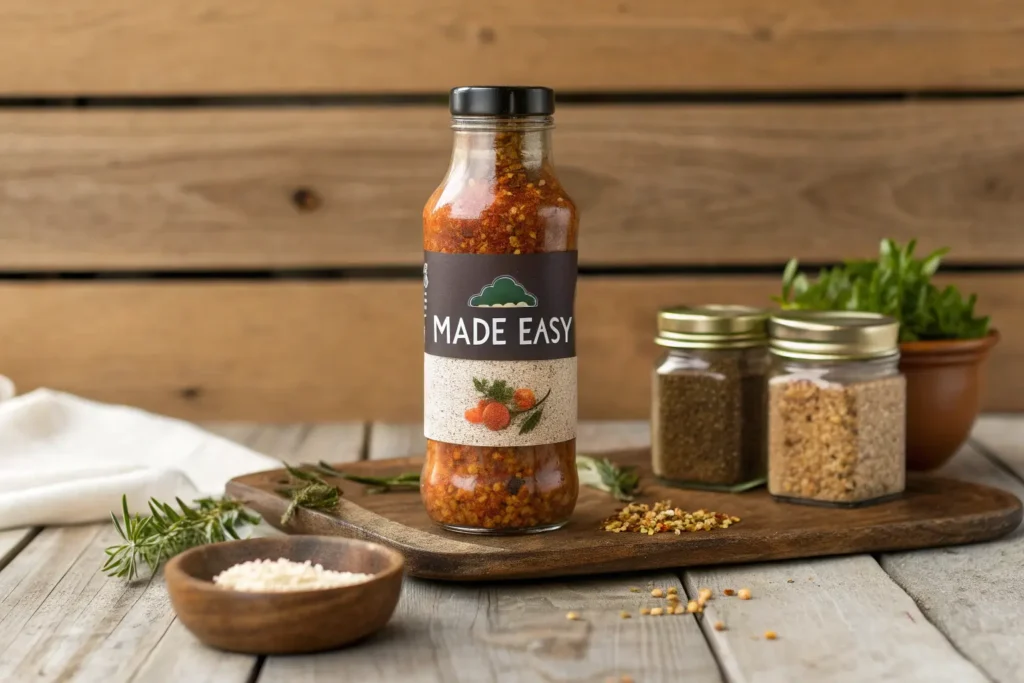
Step 2: Add Wet Flavor Components
The Moisture Method
Liquid ingredients contribute significantly to your meatloaf’s flavor profile:
- Mix wet ingredients (Worcestershire, mustard, etc.) in a separate bowl until well combined
- Add this wet mixture to your dry seasoning blend, creating a flavor-packed paste
- Incorporate into meat mixture gently but thoroughly for maximum distribution
Pro Tip: For maximum flavor development, allow your seasoned meat mixture to rest for 15-30 minutes before forming your loaf. This resting period allows flavors to meld and penetrate the meat fibers.
The moisture from these wet ingredients helps distribute flavors evenly while contributing essential flavor compounds that dry spices alone can’t deliver. This two-stage approach ensures each component plays its proper role in building your meatloaf’s flavor profile.
Step 3: Layer Flavors Through Proper Mixing Technique
The Integration Method
The final step focuses on technique rather than ingredients:
- Add breadcrumbs to absorb and distribute flavors while maintaining moisture
- Use clean hands (not spoons) for superior incorporation and texture control
- Mix just until ingredients are combined—overmixing results in dense, tough meatloaf
Pro Tip: Test your seasoning by cooking a small sample in a skillet before baking the entire loaf. This allows for last-minute adjustments before committing to the full baking time.
Your hands remain the most effective tools for feeling when ingredients are properly combined without overworking the meat proteins. This gentle approach preserves the tender texture that distinguishes excellent meatloaf while ensuring flavors are evenly distributed.
Regional Meatloaf Seasoning Variations
Once you’ve mastered the classic approach, consider these regional twists that showcase how versatile meatloaf seasoning can be:
Southern-Style Meatloaf Seasoning
| Ingredient | Amount (per pound) |
|---|---|
| Bell Pepper (finely diced) | 1/4 cup |
| Cajun Seasoning | 1 teaspoon |
| Hot Sauce | 1/2 teaspoon |
| Sage | 1/4 teaspoon |
Southern meatloaf embraces bold flavors and slight heat. The bright, sweet crunch of bell peppers balances the warmth of Cajun seasoning, while sage introduces an earthy, herbaceous quality that complements pork-enhanced meatloaf beautifully.
Italian-Inspired Meatloaf Seasoning
| Ingredient | Amount (per pound) |
|---|---|
| Italian Seasoning | 1 teaspoon |
| Fennel Seeds (crushed) | 1/4 teaspoon |
| Parmesan Cheese | 2 tablespoons |
| Sun-dried Tomatoes (minced) | 1 tablespoon |
This Mediterranean approach transforms your meatloaf into something reminiscent of Italian sausage, with fennel seeds providing their distinctive anise-like flavor. The umami richness from aged Parmesan and concentrated sweetness of sun-dried tomatoes creates remarkable depth without overwhelming the dish.
Smoky Southwest Meatloaf Seasoning
| Ingredient | Amount (per pound) |
|---|---|
| Smoked Paprika | 1 teaspoon |
| Ground Cumin | 1/2 teaspoon |
| Chili Powder | 1/2 teaspoon |
| Dried Cilantro | 1/2 teaspoon |
For those who appreciate bold, sunbaked flavors, this southwestern variation delivers subtle heat and smoky undertones. The earthy warmth of cumin pairs beautifully with the fruity complexity of smoked paprika, creating a meatloaf that stands confidently alongside traditional Mexican and Tex-Mex side dishes.
Troubleshooting Your Meatloaf Seasoning
Even experienced cooks occasionally encounter challenges with seasoning balance. Here are straightforward solutions to common issues:
Fixing Common Seasoning Issues
- Too Bland: Add 1/4 teaspoon more salt and 1/2 teaspoon Worcestershire sauce to enhance existing flavors
- Too Salty: Increase breadcrumbs by 2 tablespoons and add 1 tablespoon tomato paste to dilute and balance
- Too Spicy: Add 1 teaspoon brown sugar to counteract heat without masking other flavors
- Too Herby: Balance with additional savory elements like garlic powder and Worcestershire sauce
- Flavors Not Melding: Allow mixture to rest longer before cooking or add 1/2 teaspoon more of an acidic ingredient
Remember that adjustments should be made gradually – you can always add more, but you can’t remove excess seasoning once incorporated.
Perfecting Your Meatloaf: Beyond Seasoning
While seasoning is crucial, these additional factors help create the ultimate meatloaf experience:
Choosing the Right Meat Blend
- 80/20 beef provides ideal fat content for flavor and juiciness
- Consider adding ground pork (30%) for enhanced flavor complexity
- Ground veal (10%) adds remarkable tenderness and subtle richness
The protein foundation significantly impacts your final result. While pure beef meatloaf remains popular, combined meat blends offer more interesting flavor profiles and improved texture. Whatever your choice, maintain adequate fat content (around 20% total) to prevent dry, crumbly results.
The Role of Fillers in Flavor Distribution
- Breadcrumbs absorb and distribute seasonings while maintaining structural integrity
- Soaked bread provides exceptional moisture while carrying flavor compounds
- Oatmeal offers hearty texture while effectively absorbing seasonings
These ingredients serve multiple purposes beyond simply stretching your meat budget. They create pathways for flavor distribution while absorbing and retaining moisture during cooking, resulting in a meatloaf that remains tender and flavorful even when reheated.
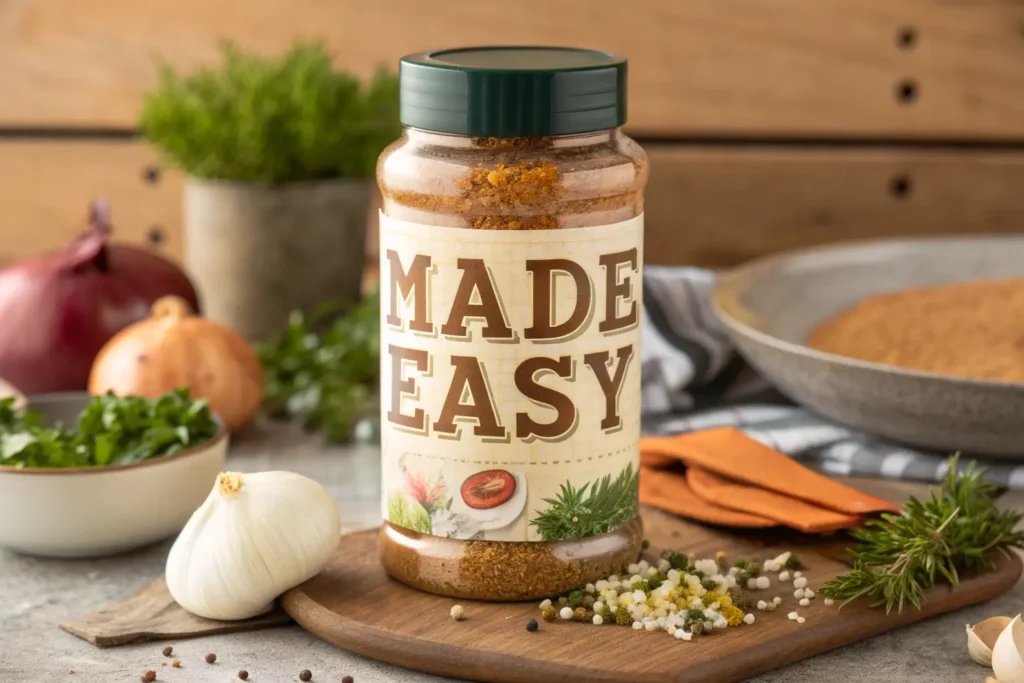
Conclusion: Your Journey to Meatloaf Mastery
Mastering meatloaf seasoning isn’t just about following a formula—it’s about understanding how flavors work together to create something greater than their individual parts. With our three-step approach, you’ve learned to create a balanced, flavorful foundation; incorporate wet ingredients for depth; and use proper technique to ensure perfect distribution.
Remember that the most exceptional meatloaf seasoning is the one your family eagerly anticipates, so don’t hesitate to adjust and experiment based on their feedback and preferences. Begin with our proven method, then gradually introduce your creative touches. Your journey to becoming the meatloaf virtuoso of your household has just begun!
Ready to revolutionize your family’s meatloaf experience? Start with our basic three-step seasoning approach this week, then experiment with one of our regional variations next time. Share your results in the comments below – we’d love to hear which flavor profile became your household favorite!
Frequently Asked Questions About Meatloaf Seasoning
Can I make meatloaf seasoning ahead of time?
Yes! Creating a batch of meatloaf seasoning mix saves precious time and ensures consistency across multiple meals. Store your dry meatloaf seasoning blend in an airtight container in a cool, dark place for up to 3 months. The convenience of having your signature meatloaf seasoning ready to go makes weeknight dinner preparation significantly easier.
How much meatloaf seasoning should I use per pound of meat?
For perfectly seasoned meatloaf, use approximately 2-3 tablespoons of blended dry meatloaf seasoning per pound of ground meat, plus the recommended wet ingredients. However, this amount can vary based on your personal preference and the freshness of your herbs and spices. Remember that older spices may require slightly higher quantities to achieve the same flavor impact.
Can I reduce sodium in my meatloaf seasoning?
Absolutely! Reduce salt by half and increase aromatic herbs like thyme and oregano to maintain flavor complexity. Adding acid components like tomato paste or a splash of vinegar enhances flavor perception without added sodium in your meatloaf seasoning. You might also consider incorporating finely chopped fresh vegetables like carrots or bell peppers, which contribute natural sweetness and moisture.
What’s the best way to test my meatloaf seasoning before cooking the entire loaf?
Cook a small patty of your seasoned meatloaf mixture in a skillet for 2-3 minutes per side. This quick test allows you to taste and adjust your meatloaf seasoning before committing to baking the entire loaf. Pay attention to overall flavor balance, salt level, and whether the herbs and spices are present but harmonious – no single element should dominate the profile.
Are there gluten-free alternatives for meatloaf seasoning recipes?
The dry components of meatloaf seasoning are naturally gluten-free. For the complete recipe, simply replace breadcrumbs with certified gluten-free breadcrumbs, crushed gluten-free crackers, or rolled oats when mixing your meatloaf seasoning into the meat. Many creative cooks also use crushed pork rinds or almond flour as excellent gluten-free binders that complement meatloaf seasoning beautifully.
How can I enhance my meatloaf seasoning for more umami flavor?
Boost your meatloaf seasoning with umami-rich additions like 1 teaspoon of mushroom powder, 1 tablespoon of grated Parmesan cheese, or 1/2 teaspoon of MSG per pound of meat for deeper, more satisfying flavor profiles. Alternatively, consider incorporating rehydrated dried mushrooms (finely chopped) or a splash of soy sauce into your meatloaf seasoning blend for natural glutamate enhancement without artificial additives.
Have you given our recipe a try?
There are no reviews yet. Be the first one to write one.

